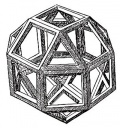Cuban art
From The Art and Popular Culture Encyclopedia
|
Related e |
|
Featured: |
Cuban art is a diverse cultural blend of African, European and North American design reflecting the diverse demographic of the island. Cuban artists embraced European modernism and the early part of the 20th century saw a growth in Cuban vanguardism movements, these movements were characterized by a mixture of modern artistic genres. Some of the more celebrated 20th century Cuban artists include Amelia Peláez (1896-1968), best known for a series of mural projects and painter Wifredo Lam (1902-1982) who created a highly personal version of modern primitivism.
More internationally known is the work of photographer Alberto Korda, whose photographs following the early days of the Cuban revolution included a picture of Che Guevara which was to become one of the most recognizable images of 20th century. There is a flourishing street art movement influenced by Latin American artists Jose Guadalupe Posada and the muralist Diego Rivera
In the late 19th century, landscapes dominated Cuban art and classicism was still the preferred genre.
By the late 1920's, the Vanguardia artists had rejected the academic conventions of Cuba's national art academy. In their formative years, many had lived in Paris, where they studied and absorbed the tenets of surrealism, cubism, and modernist primitivism. They returned to Cuba committed to new artistic innovation and keen to embrace the heritage of their island. These artists became increasingly political in their ideology, viewing the rural poor as symbols of national identity in contrast to the ruling elite of post independence Cuba. The vanguardia artists achieved international recognition in 2003 with the Modern Cuban Painting show at the Museum of Modern Art in New York, subsequently showing in Paris.
Vanguard leader Eduardo Abela was typical of the movement, a painter who studied in Paris, Abela discovered his homeland Cuba from abroad apparently motivated by a combination of distance and nostalgia. On his return, Abela entered a highly productive period of work. His murals of Cuban life were complemented by cartoons which became social critiques of Cuban life under authoritarian president Gerardo Machado.
After the Cuban revolution of 1959 Cuban artists became more isolated from the anti-establishment artistic movements of the United States and Europe. Though artists continued to produce work in Cuba, many pursued their careers in exile.

